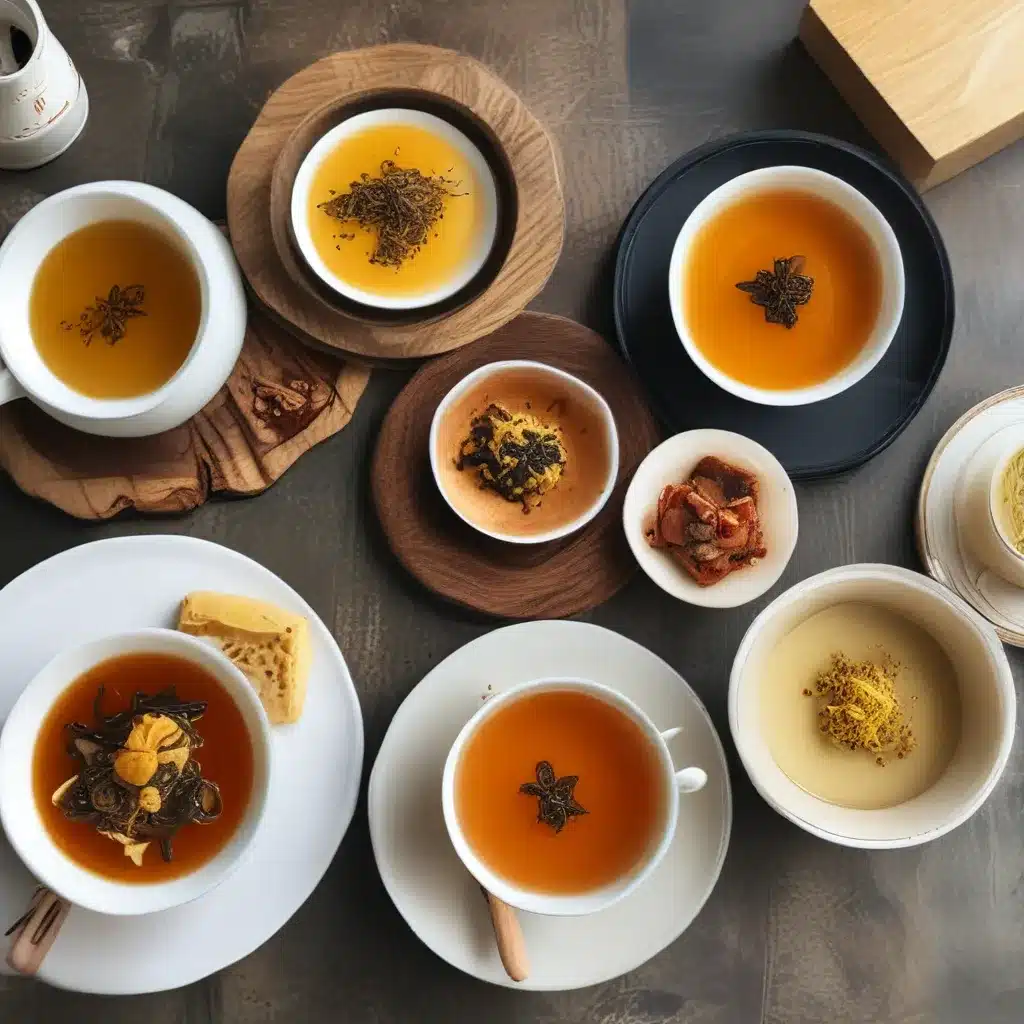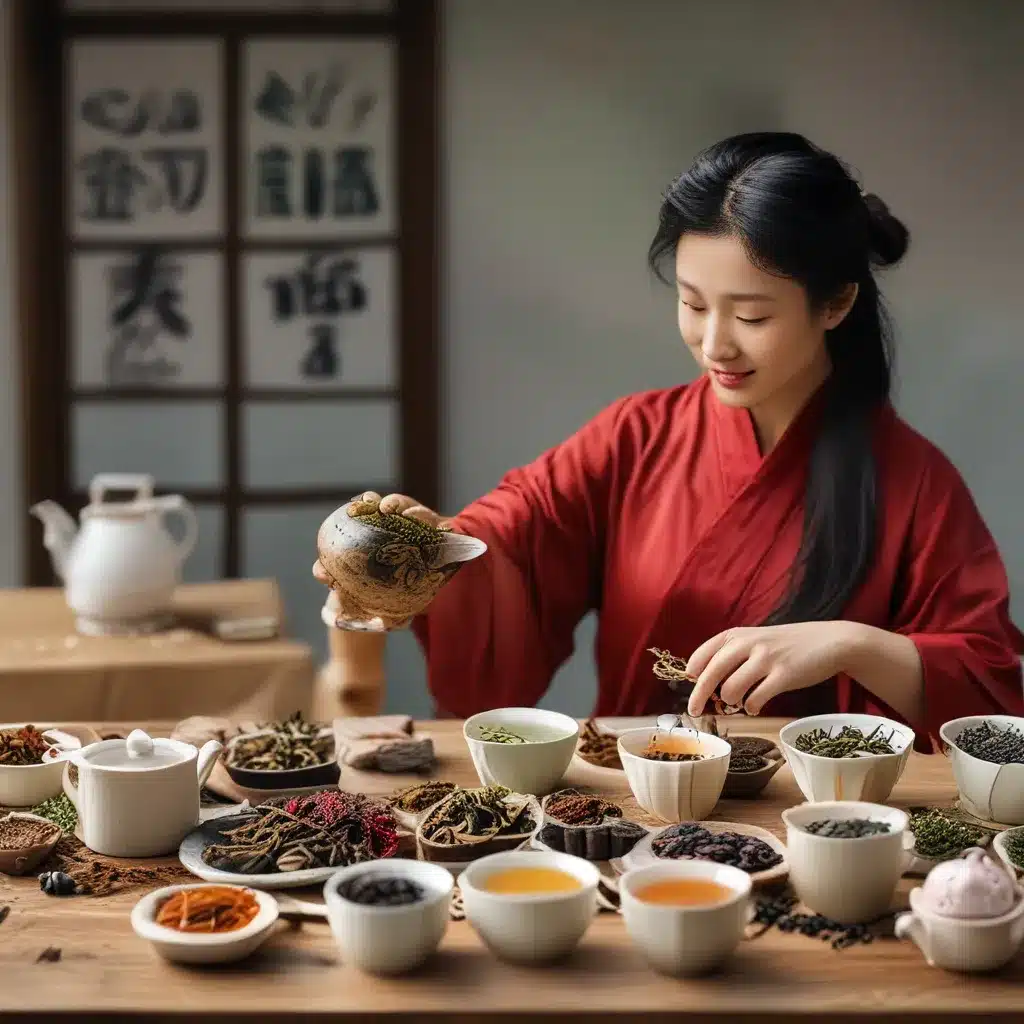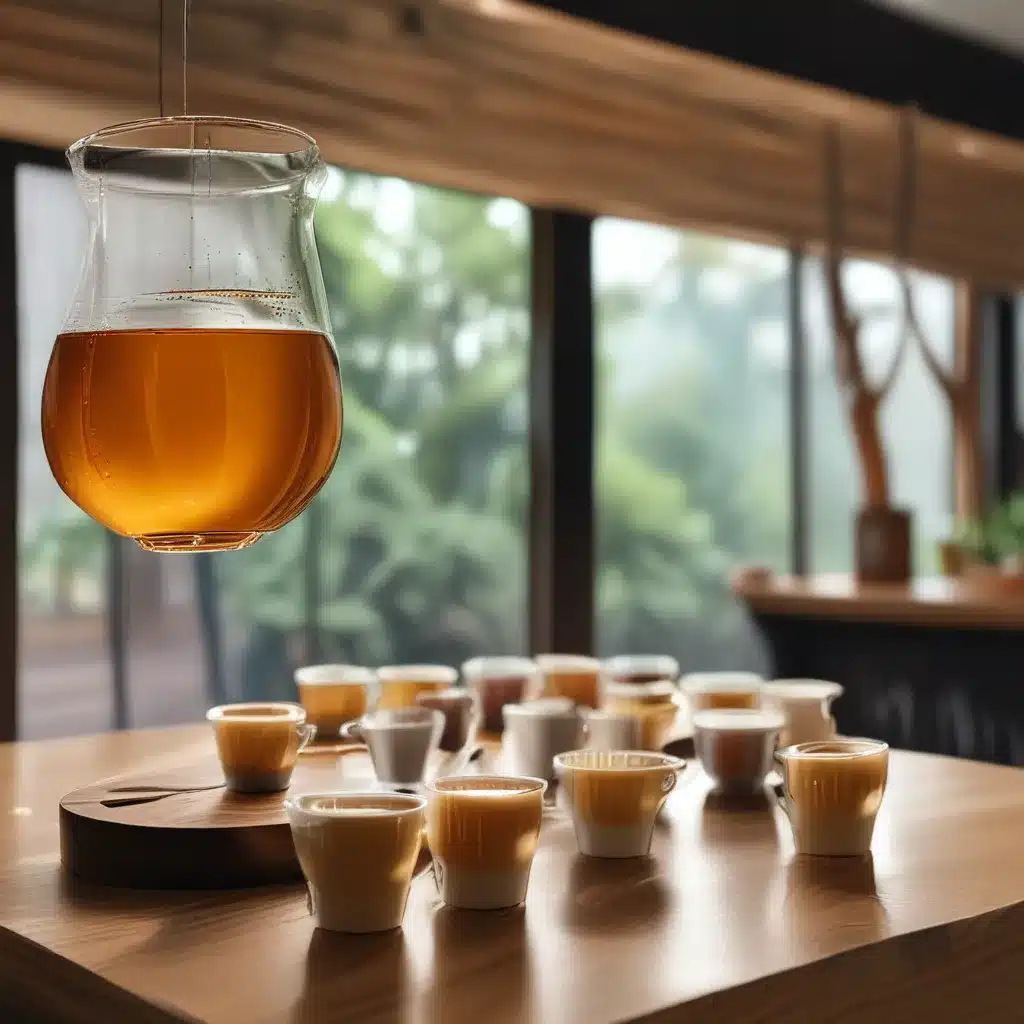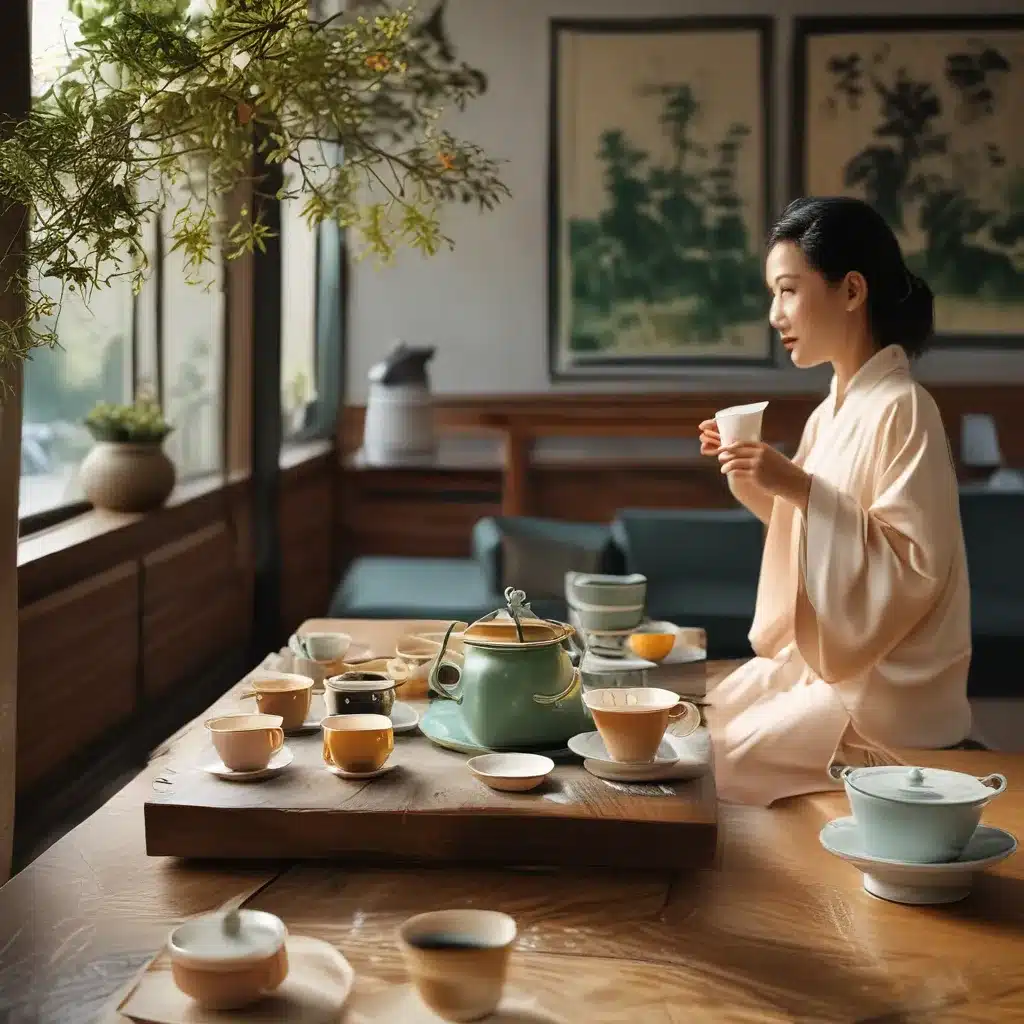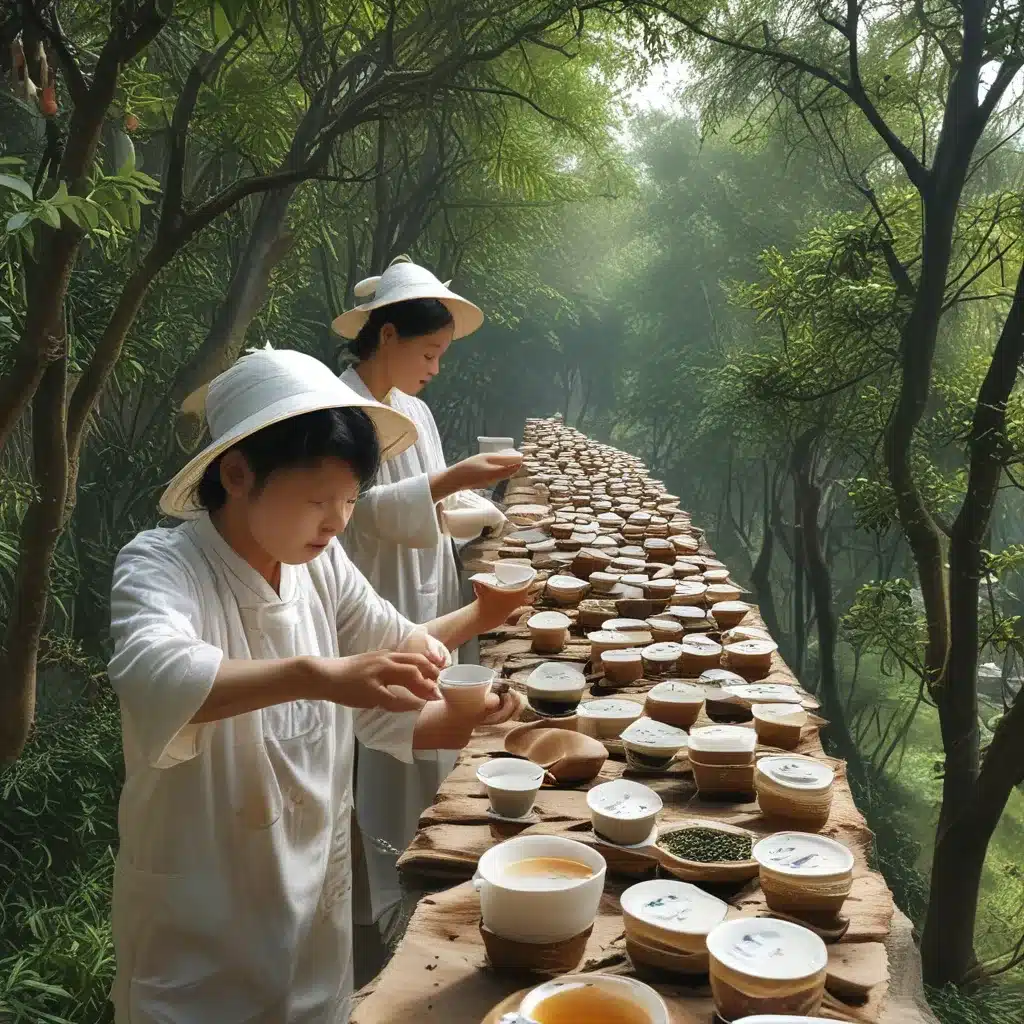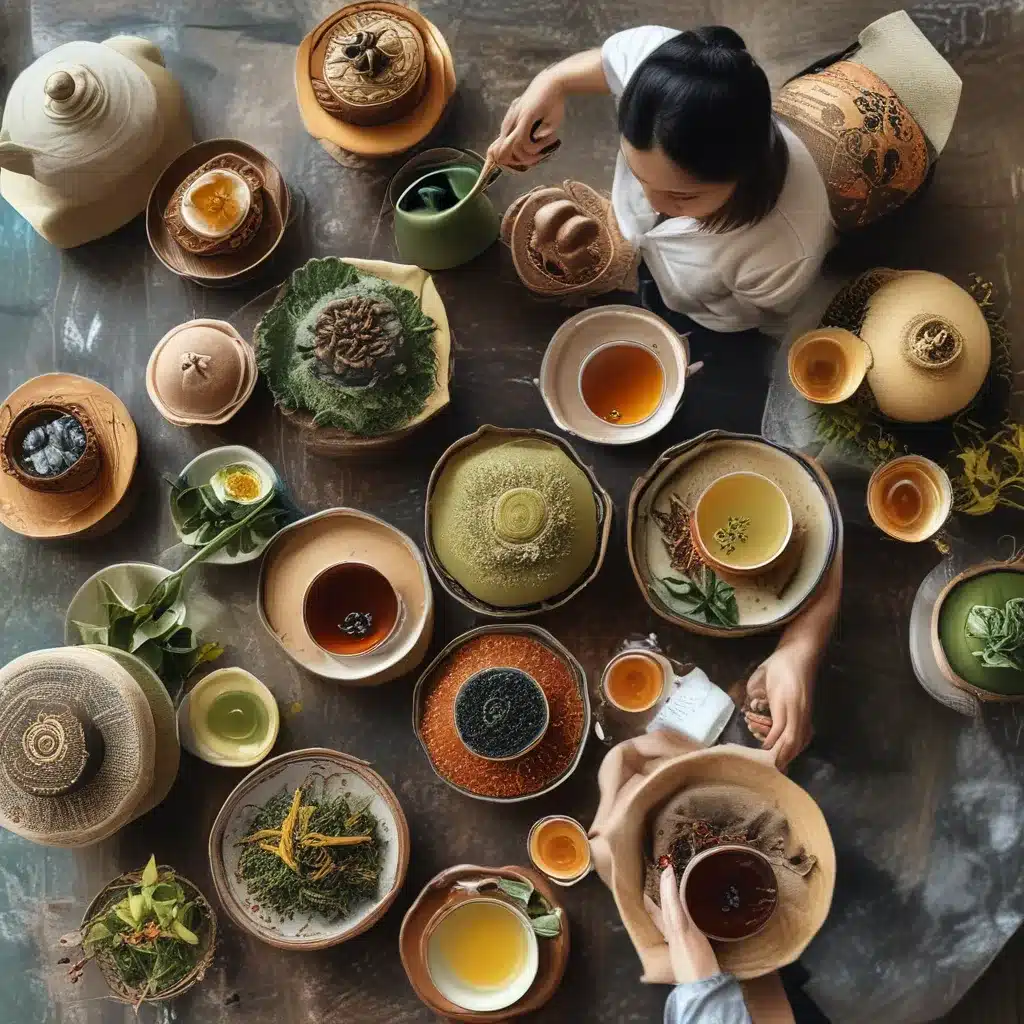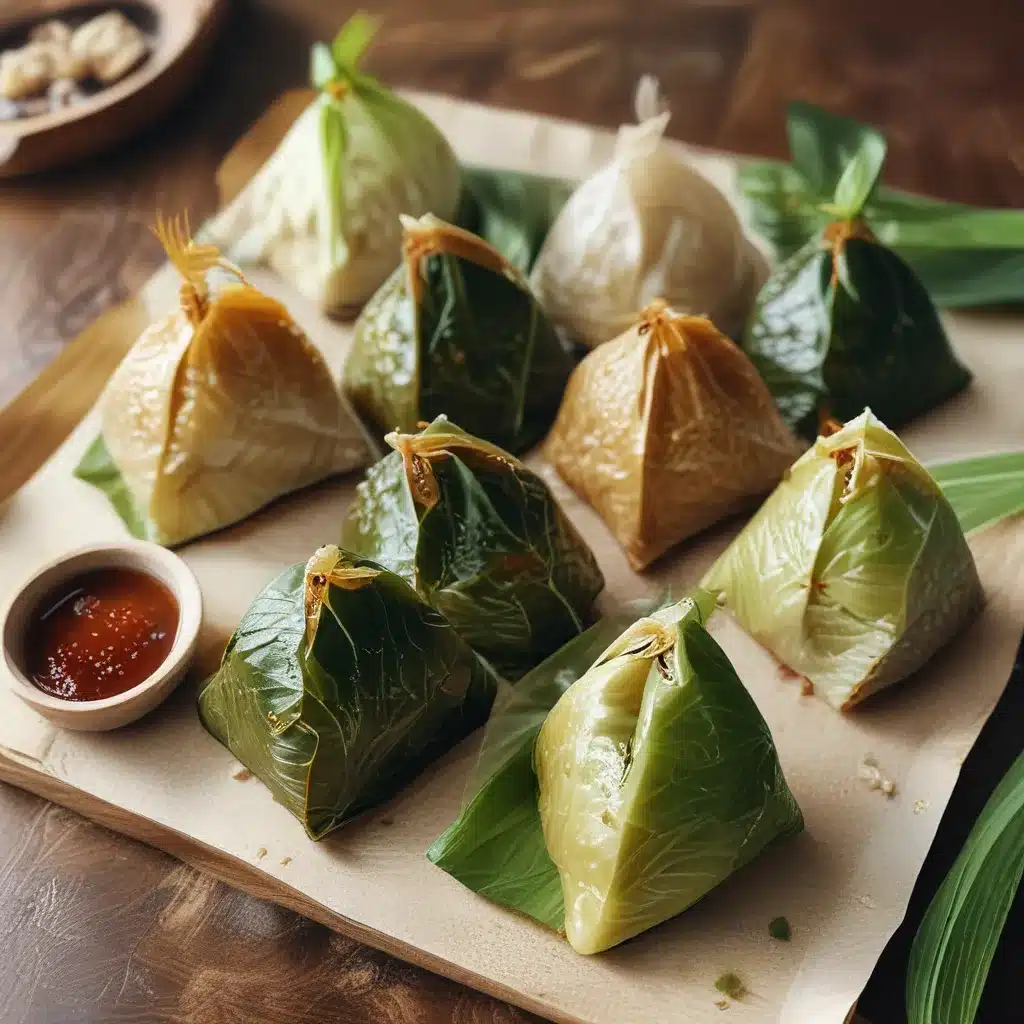
The Art of the Glutinous Delight
As I step into the bustling kitchen of One Dragon Restaurant, the enticing aroma of freshly steamed zongzi envelops me. These savory parcels, masterfully crafted by the skilled hands of the restaurant’s chefs, are a testament to the rich culinary heritage of Shanghai. With an insatiable curiosity, I’m eager to unravel the secrets behind these delectable delights.
My mother’s unwavering commitment to quality has long been a guiding principle in my life. I vividly recall the meticulous process of separating each grain of jasmine rice from the glutinous mound, a task she referred to as “pilih the pulut.” As a young child, I struggled to comprehend the necessity of such painstaking effort, but now I understand the importance of attention to detail in crafting the perfect zongzi.
Mastering the Art of Zongzi-Making
The zongzi-making process at One Dragon Restaurant is nothing short of a masterclass in precision and artistry. I have the privilege of joining Lily Wong, the restaurant’s renowned zongzi expert, as she guides me through the intricate steps.
Lily’s hands move with remarkable dexterity, effortlessly shaping the glutinous rice into perfect parcels. She emphasizes the importance of using high-quality glutinous rice, preferably sourced from Thailand, to achieve the desired translucent and chewy texture. “The secret,” she reveals, “lies in determining the precise amount of rice to encase within each zongzi. Too much, and the dumpling will be compact and hard; too little, and it may fall apart.”
As I carefully follow Lily’s instructions, I’m struck by the delicate balance required in this age-old craft. The gentle jiggle of the uncooked zongzi, the vibrant hue imparted by the alkaline lye water, and the satisfying chew of the cooked dumplings – every detail is meticulously considered.
The Allure of Fillings
While the classic zongzi, with its simple yet delectable filling of glutinous rice, is a true masterpiece, the versatility of this dish knows no bounds. At One Dragon Restaurant, the chefs have mastered the art of crafting zongzi with a wide range of savory and sweet fillings.
“Some prefer the indulgence of red bean paste,” Lily explains, “while others enjoy the subtle addition of a single plump kidney bean.” As I sample the various creations, I’m struck by the harmony of flavors and textures. The zongzi with seasoned pork and preserved egg yolk offer a rich, umami-packed experience, while the ones with sweet red bean paste provide a delightful contrast to the chewy rice.
Intrigued by the diversity of fillings, I can’t help but wonder about the origins of these culinary innovations. Lily shares, “In the good old days, families would take great pride in their zongzi recipes, guarding them jealously to preserve their culinary reputations.” It’s a testament to the enduring passion and creativity that has shaped this beloved dish over generations.
The Art of Preservation
As the zongzi-making class comes to a close, Lily imparts one final lesson: the art of preserving these delicate delights. “For convenient storage,” she advises, “it’s best to seal the cooked zongzi in a freezer bag before placing them in the freezer. They can be safely stored for up to a month.”
I can’t help but reminisce about the times when my mother would lovingly prepare zongzi for our family. The skill and care she poured into each step were evident in the perfect texture and shape of the dumplings. As I carefully wrap and store the zongzi I’ve crafted, I feel a sense of connection to that rich culinary legacy.
Unwrapping the Essence of Shanghai
As I savor the last bite of my freshly steamed zongzi, I’m struck by the depth of flavor and the complex layers of texture. This humble dish, rooted in the culinary traditions of Shanghai, has become a profound expression of the city’s cultural heritage.
The zongzi at One Dragon Restaurant are more than just delectable morsels; they are a testament to the skill, passion, and unwavering commitment to quality that defines the restaurant’s ethos. In each bite, I can taste the dedication of the chefs, the wisdom of generations past, and the vibrant spirit of Shanghai’s rich culinary landscape.
Whether enjoyed as a classic treat or as an imaginative fusion of flavors, the zongzi at One Dragon Restaurant truly embody the versatility and allure of this beloved delicacy. As I leave the restaurant, I can’t help but feel a renewed appreciation for the art of zongzi-making and the culinary treasures that Shanghai has to offer.

